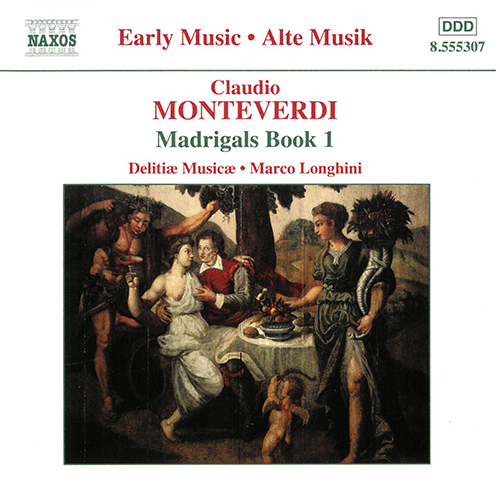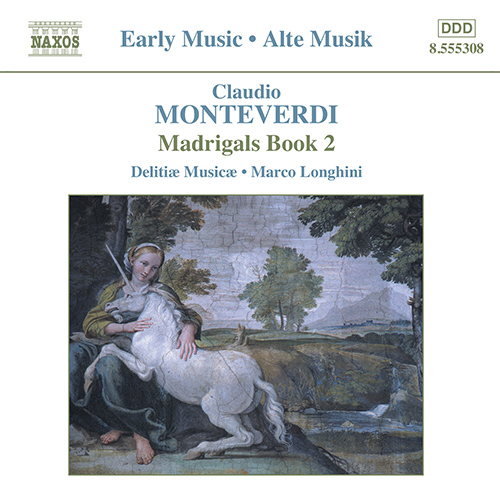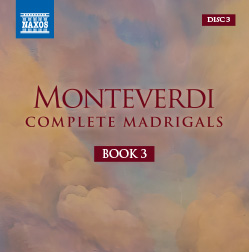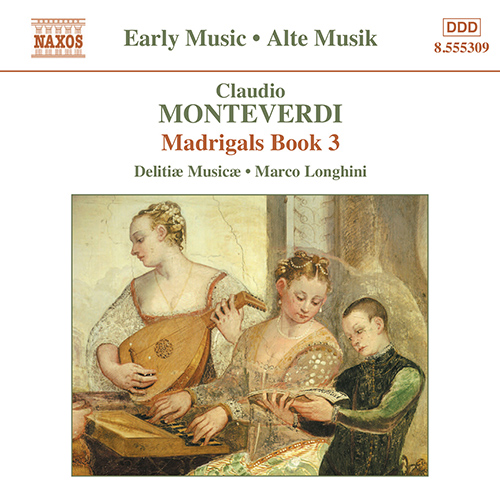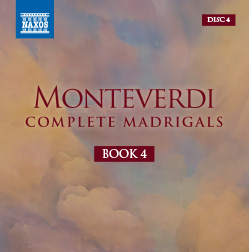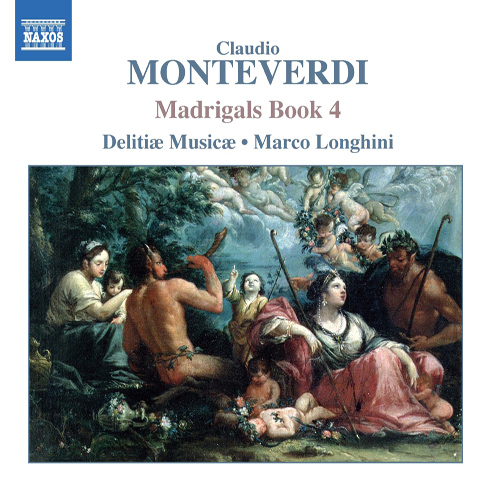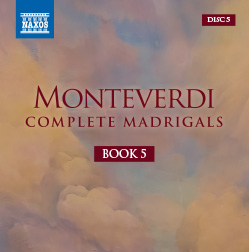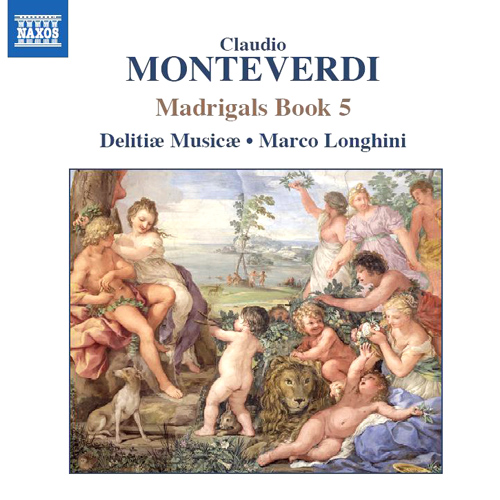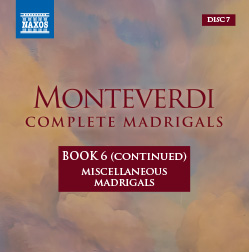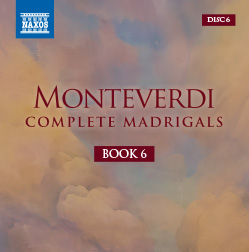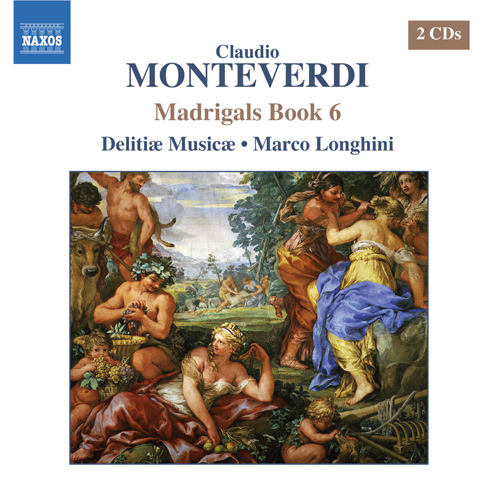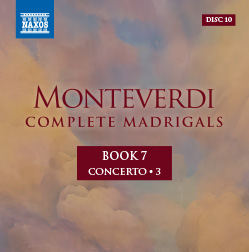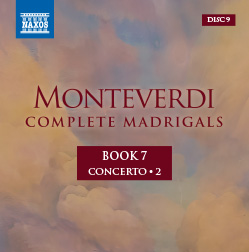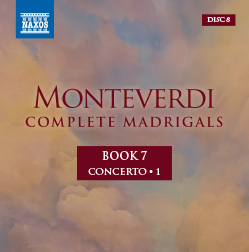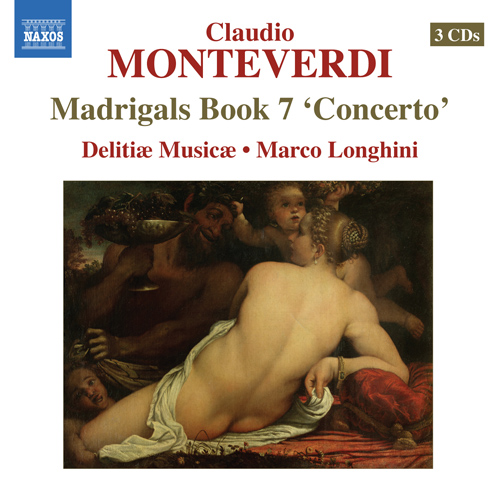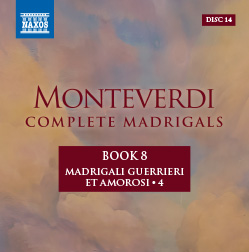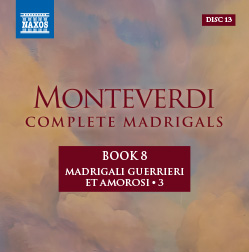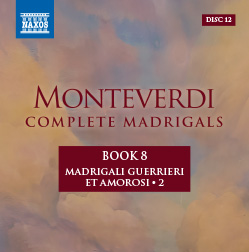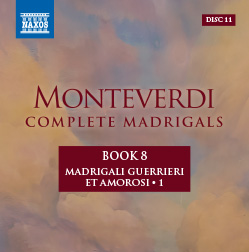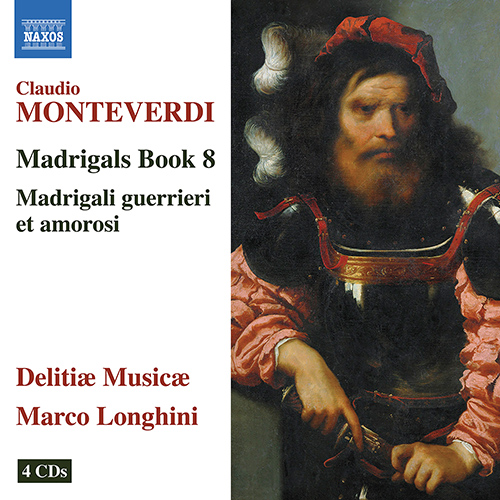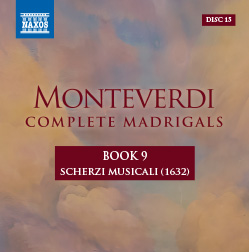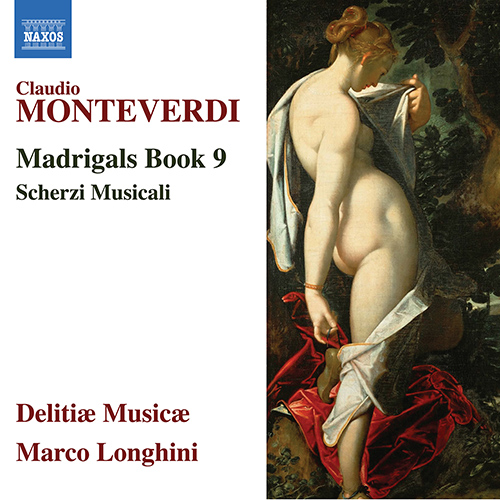MONTEVERDI’S MADRIGALS
Albums
BOOK 1 • COMPLETE SECULAR MANUSCRIPT WORKS
Monteverdi’s First Book of Madrigals for five voices, published in Venice in 1587 when he was still only 19, was his third major publication. Written for courts and patrons whose pleasure was to surround themselves with the finest artists of the time, the madrigal was the secular song par excellence. With amorous texts depicting the antitheses of love – suffering, and life – death, it reached its highest expression with Monteverdi. In the First Book, with its wonderful variety of light and shade, its highly effective unraveling of melodies and intricate harmonies and striking word painting, the seeds are sown for Monteverdi’s mature and increasingly radical works. The album concludes with the complete secular manuscript works, including the masterpiece Lamento d’Olimpia, in editions prepared by Marco Longhini. Fuggi cor and Se d’un angel are here recorded for the first time.
‘This release will appeal to the earnest Monteverdi collector.’ – American Record Guide
Listen to an excerpt from Ch’ami la vita mia nel tuo bel nome
BOOK 2

Monteverdi’s Second Book of Madrigals was published when the composer was just 22 years old. In these new works he moves almost completely away from the repetitive structure typical of the First Book, and towards the ‘form without a form’ which is shaped around the lyric that inspires and sustains it. The poetry and images chosen here emphasise the two favourite themes of court culture: love and nature. In this recording the vocal parts are sung by male voices only and the works are presented in the original order of the 1590 Venetian edition.
‘This one is another winner. You have only to hear the opening two-part Non si levav’ancor l’alba novella to understand how a work in this genre could be called a masterpiece.’
– ClassicsToday.com

Listen to an excerpt from Crudel, perché mi fuggi
BOOK 3
Monteverdi’s Third Book of Madrigals, published in 1592 and dedicated to Duke Vincenzo Gonzaga of Mantua, was the composer’s first major success and described by him as ‘mature and tasty fruit’. Clearly influenced by the artistic splendours of the Mantuan court, it is an innovative and at times revolutionary work in which drama and intensity of feeling, allied with a wide range of musical techniques, including declamation and dissonance, are taken to even greater expressive heights than in the First Book and the Second Book. This is particularly evident in the two three-part cycles, Vattene pur, crudel (‘Go then, cruel man’) and Vivrò fra i miei tormenti (‘I shall live midst grief and torment’), set to texts from Tasso’s Gerusalemme liberata (‘Jerusalem Delivered’). In line with recent research into performance practice of the time, all the singers on this recording are men.
‘The performance by the ensemble Delitiæ Musicæ does full justice to the imaginative settings by Monteverdi … the recordings [belong] to the best available.’
– MusicWeb International

|

|
Listen to an excerpt from Ma dove, oh lasso me!
BOOK 4
Monteverdi’s Fourth Book of Madrigals, published in 1603, is one of the composer’s most attractive collections, continuing the expressive innovation that had characterised the Third Book. The texts deal mainly with the experiences of yearning and pain caused by the vicissitudes of love, from the erotic charge of Sì, ch’io vorrei morire (‘Yes, I would die’) to the pathos of heartbreaking separations or farewells in, for example, Longe da te, cor mio (‘Far from you, my love’). Monteverdi uses madrigalismo, or word painting, not to create sophisticated plays on words but to express pure human emotion. In line with recent research into performance practice of the time, all the singers on this recording are men.
‘The madrigals’ declamatory, expository and “speaking” qualities have rarely been as sharply etched as in this recording … these are bracing and hugely enjoyable performances.’
– International Record Review
Listen to an excerpt from Io mi son giovinetta
BOOK 5
Monteverdi’s Fifth Book of Madrigals, published in 1605, takes even further the expressive writing of the Fourth Book, which had delighted his patron, the Duke of Mantua, but scandalised others. From the Fifth Book onwards, the traditional madrigal for five voices is transformed into the madrigale concertato, in which instrumental writing forms an important and innovative part of the structure. The theme running through the 19 madrigals is that of unrequited love, with the extended and highly dramatic scene surrounding the unhappy couple, Dorinda and Silvio, forming the heart of the collection. In line with recent research into performance practice of the time, all the singers on this recording are men.
‘And as with previous volumes in the series, the same qualities of clarity of diction, purity of tone and precision of ensemble paradoxically serve to underscore the psychological and erotic implications of the madrigals more effectively than many a more full-blooded approach.’
– Limelight Magazine

|

|
Listen to an excerpt from T’amo, mia vita
BOOK 6 • MISCELLANEOUS MADRIGALS
Monteverdi’s Sixth Book of Madrigals, which appeared nine years after his previous volume, was conceived as his final, though highly significant contribution to the stile antico. This was on the point of being consigned to history by the solo vocal style of the new musical form of opera and by the equally innovative madrigale concertato. Two masterpieces within Book Six show that the traditional five-part madrigal was still a force to be reckoned: the Sestina, Monteverdi’s heartrending tribute to his wife, who had died in 1607, and the Lamento d’Arianna, a polyphonic transcription of his best-known solo operatic piece. The 1623 solo version of the Lamento can be heard on Disc 7.
‘This is very demanding music to take to a deep level of interpretation. Delitiæ Musicæ goes beyond a “fine rendering” of Monteverdi’s intentions.’
– American Record Guide

|
Listen to an excerpt from Qui rise, o Tirsi
BOOK 7 ‘CONCERTO’
The Concerto (as Claudio Monteverdi entitled his Seventh Book of Madrigals) was published five years after the Sixth Book had appeared. It represents a clear break with Monteverdi’s earlier publications: here the madrigal is transformed or, perhaps, it would be better to say it has vanished, at least in the form that would have been recognised up to that point. Of the 32 compositions, there is not a single five-voice madrigal, only pieces for one to four voices, all with basso continuo, some with violins, along with works that might be called ‘experimental’. It was the heterogeneous nature of this collection that led Monteverdi to use the title Concerto. Marco Longhini’s new complete critical edition, the fi rst since Malipiero’s 1932 edition, was prepared specifically for this recording.
‘The set as a whole breathes a sense of commitment… The concluding ballo, “Tirsi e Clori”, is something of a showstopper: the cast is audibly enjoying itself.’
– Gramophone

|
Listen to an excerpt from Ballo: Tirsi e Clori – Balliamo e giriamo
BOOK 8 ‘MADRIGALI GUERRIERI ET AMOROSI’
The Eighth Book of Madrigals, subdivided into a substantial series of vocal and instrumental partbooks, contains some of Monteverdi’s greatest music. In this sumptuous collection the material is carefully arranged by category into madrigals of war, love and those for the stage, with a wide array of human passions and compositional styles. This is the first recording to present Book Eight in its original, uncut form, also incorporating instrumental sinfonias and dances by Biagio Marini (1594–1663) to round off Monteverdi’s design. In keeping with 17th-century practice, the madrigals are performed entirely by male voices, including a boy soprano in the role of Cupid.
‘Longhini and Delitiæ Musicæ have brought to these lesser heard Monteverdi madrigals an artistry and sense of continuity that is equal to, and sometimes better than, more common realizations of his three surviving operas.’
– WTJU

★★★★
|

★★★★
|

★★★★
|
Listen to an excerpt from Altri canti di Marte (Madrigali amorosi)
BOOK 9 • SCHERZI MUSICALI
Monteverdi’s Ninth Book of Madrigals, published posthumously, and the 1632 Scherzi musicali (‘Musical Jokes’) are thematically linked by the recurring theme of war for the sake of love. Prefaced with a Sinfonia by Biagio Marini and featuring one of Monteverdi’s towering masterpieces, Zefiro torna, the Ninth Book comprises the few remaining late madrigals, a number of canzonette, as well as works with the same titles and verses from the earlier Eighth Book, here performed in completely different musical settings. Recorded complete, and in historically informed fashion, this is the final volume in this series.
‘Delitiæ Musicæ, living up to their name in characterisation and story-telling. Depths of sympathy and understanding inform their approach to the text, from extreme tenderness to violent emotional outburst, using new editions by director Marco Longhini.’
– Choir & Organ


